French painter Marie-François Firmin-Girard (1838-1921) was one of the most attentive interpreters and witnesses of French society during the glorious years of the Belle Époque. A pupil of famous painter Jean-Léon Gérôme (1824-1904), Firmin-Girard became one of the most frequent participants to the Salon, where his works incessantly caught the attention of the French audience and attracted the interest of wealthy American collectors. Patrick Faucheur, Firmin-Girard’s great grandson, talks to us about preparation of the painter’s upcoming catalogue raisonné.

Having a painter like Firmin-Girard as one’s ancestor seems to me very fascinating. When did you start being interested in the work of your great grandfather and why did you decide to embark on the preparation of his catalogue raisonné?
Great grand-son of Firmin-Girard on my mother’s side, I spent my childhood and teenage among his works. His studio fund included several paintings, which my grandfather, his only heir, had kept in our house. I used to spend much time looking at these works, deeply fascinated by the variety and realism of their subjects, the profusion of details, and the diversity of their landscapes and country scenes. During these early years of my life, I acquired a sensitive and emotional knowledge of Firmin-Girard’s oeuvre, progressively getting to know his style.
Many years later, one of my uncles engaged in putting together a first inventory of Firmin-Girard’s works. Simultaneously, his paintings started to reappear on the market. I therefore found it natural to commit myself to researching the artist and studying the different periods that marked out his career. By tracing the life of Firmin-Girard, I discovered his aspirations, the environment he lived in, his social relations and the criticism towards his work. I also started to shed light on the role he played in French art between the end of the nineteenth century and the beginning of the twentieth century. Conducted with a scientific approach, my research allowed me to build a solid knowledge of the painter and his oeuvre.
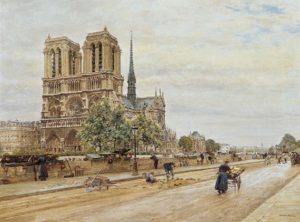
Firmin-Girard was a very versatile painter, who explored different genres throughout his life. After starting off his career as a history painter – as most artists did at the time – he later experimented with landscape painting, portraiture, Orientalist compositions and genre scenes. His most iconic works are his views of Paris, a jubilation of flowers and exquisitely dressed ladies. Considering such a rich and diverse production, what have been the main challenges you have encountered so far in putting together the artist’s catalogue raisonné?
Some of the difficulties I have encountered so far are probably very common to the preparation of any catalogue raisonné, such as finding the artist’s works today scattered across museums, galleries, private collections and auction houses. Other difficulties relate specifically to Firmin-Girard’s oeuvre. They are largely due to the diversity of his work: diversity of subjects – especially until the 1890s – and diversity of style. Following his ambition to become a history painter and the Prix de Rome, Firmin-Girard spent much time with the Impressionists, practicing en plein air painting. The success he gained at the Salon through depictions of Paris and the French bourgeoisie, along with his relationship with the Société Nationale des Beaux-Arts led him to embrace a Naturalistic style. The eclecticism of his work had required advanced research in order to trace Firmin-Girard’s artistic path from the earliest stages of his career to the last years of his life.
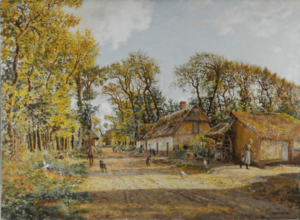
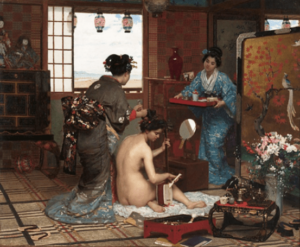
Firming-Girard’s popularity has been quite discontinuous. After being extremely famous while still alive, his appreciation started to fade after his death. Most recently, his paintings have reappeared at auctions – his masterpiece Le Quai aux fleurs being sold for 3, 021,000 USD at Sotheby’s New York in 2014 – and in museum shows. How do you think your publication will benefit Firmin-Girard’s appreciation and market?
Although the increasing presence of Firmin-Girard’s works on the market might have encouraged me to commit myself to the publication of his catalogue raisonné, I mainly decided to embark in this project in order to revive Firmin-Girard’s role in the artistic environment of the nineteenth century, when the Impressionists were in the spotlight. Institutions and museums, such as the Musée d’Orsay, and recent publications have started to foster a better understanding of nineteenth-century painters who have not yet received the same attention reserved to the Impressionists. This has certainly fostered their rediscovery and had a positive impact on their market. I am sure that the publication of Firmin-Girard’s catalogue raisonné will produce a similar positive outcome for this artist.

In the past few years, major auction houses and galleries in France, Europe and the United States have contacted me more and more frequently asking for opinions on Firmin-Girard’s work, and for contextual information, references and archival documents I was able to collect. A catalogue raisonné will finally provide a certain and certified source of information on both attribution and provenance of Firmin-Girard’s paintings, which will be accessible to all figures operating in the art field.
Considering your expertise on Firmin-Girard, is there a particular story you would like to share with us regarding a particularly difficult attribution?
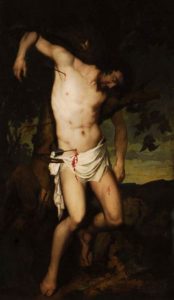 There was one attribution that was particularly challenging for me. Following the purchase of a painting depicting a religious subject and originally thought to date to the seventeenth century, the gallery that had sold it suggested a painter close to ‘Girard’ as the author of the painting. They also hypothesized the work to be a copy executed in the nineteenth century. After contacting the Musée d’Orsay, the buyer contacted me asking for my opinion on the piece. The painting depicted the martyrdom of San Sebastian and no signature appeared. A careful examination revealed that the work had been lined and the name of a Parisian house of supplies active in the mid-nineteenth century appeared on the original canvas, thus allowing to date the painting and think about an attribution. Visual elements revealed a possible link with Firmin-Girard: the mountainous cliffs of the landscape recalled the Gorges de l’Ain, which the painter had known since his childhood. The size of the canvas was similar to that of the religious paintings made within Abbé Migne’s studio, where Firmin-Girard worked while studying at the École des Beaux-Arts. I eventually found the decisive proof for attributing the painting to Firmin-Girard in a literary source. In an 1859 number of Art pour rire I found a caricature of “Firmin-Girard Saint Sebastian” exhibited at the Salon, which left me no doubt about the authorship of the painting.
There was one attribution that was particularly challenging for me. Following the purchase of a painting depicting a religious subject and originally thought to date to the seventeenth century, the gallery that had sold it suggested a painter close to ‘Girard’ as the author of the painting. They also hypothesized the work to be a copy executed in the nineteenth century. After contacting the Musée d’Orsay, the buyer contacted me asking for my opinion on the piece. The painting depicted the martyrdom of San Sebastian and no signature appeared. A careful examination revealed that the work had been lined and the name of a Parisian house of supplies active in the mid-nineteenth century appeared on the original canvas, thus allowing to date the painting and think about an attribution. Visual elements revealed a possible link with Firmin-Girard: the mountainous cliffs of the landscape recalled the Gorges de l’Ain, which the painter had known since his childhood. The size of the canvas was similar to that of the religious paintings made within Abbé Migne’s studio, where Firmin-Girard worked while studying at the École des Beaux-Arts. I eventually found the decisive proof for attributing the painting to Firmin-Girard in a literary source. In an 1859 number of Art pour rire I found a caricature of “Firmin-Girard Saint Sebastian” exhibited at the Salon, which left me no doubt about the authorship of the painting.
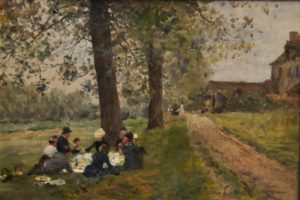
When will the catalogue raisonné be published and, as anticipated on the website you dedicate to the artist (firmingirard.com), will there be any exhibition celebrating the event?
Considering the complexity of research undertaken, the catalogue raisonné has taken a little longer than expected to come together. It is now planned to be published in the Spring of 2020. A travelling exhibition will indeed accompany the release of the book in various locations, some of which are directly associated to Firmin-Girard’s works.

